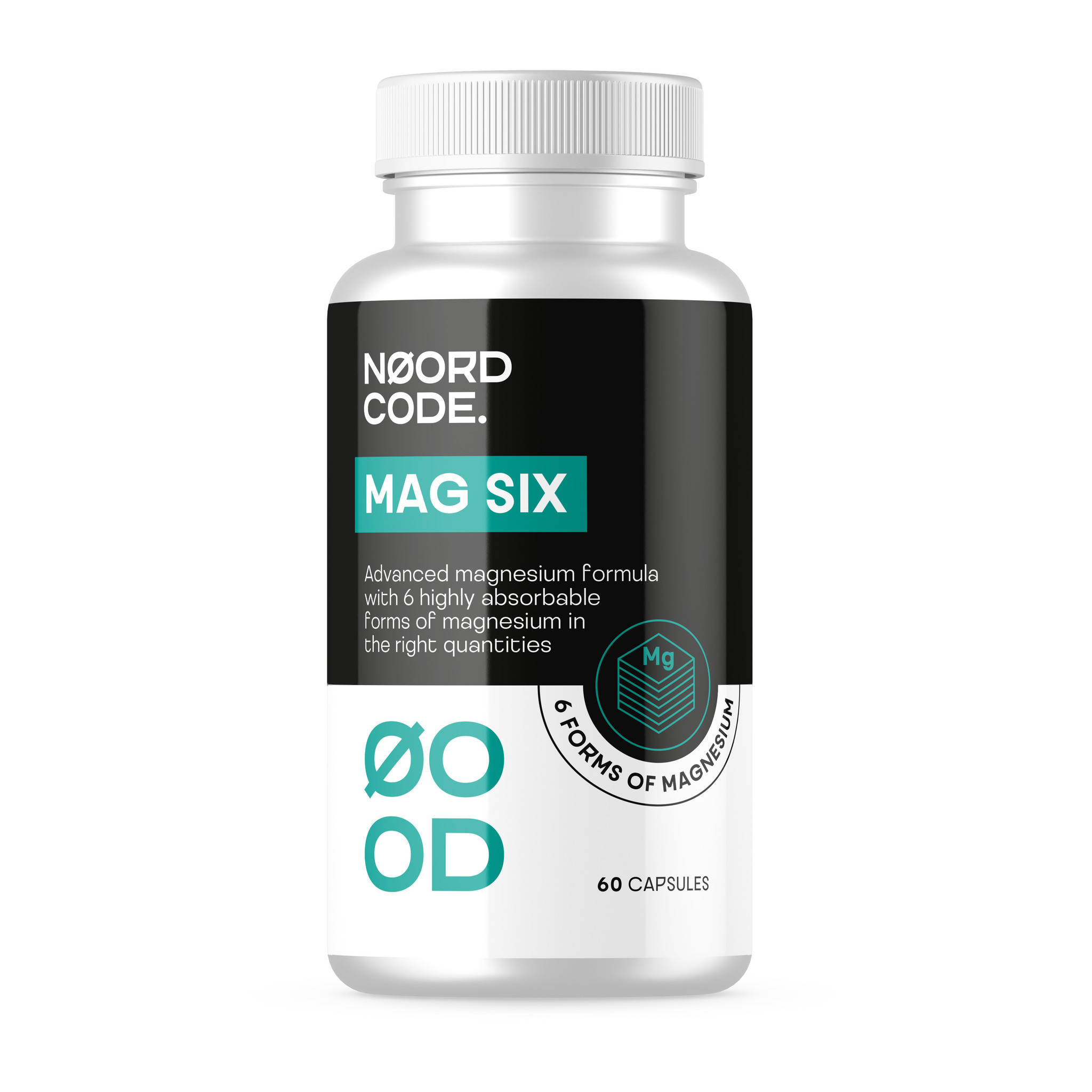Magnesium Supplements: What You Need to Know
Magnesium rich foods | How much magnesium do I need? | Why supplement with magnesium? | How to take Magnesium for optimal absorption? | How to find a good magnesium supplement
Magnesium is also called the master mineral. It is needed for literally everything in the body. It strengthens bones and ensures that your nerves can function properly. If you suffer from headaches, muscle cramps or a lack of energy, you may lack magnesium. Since our soil is depleted of magnesium - making it very difficult to get magnesium from food - 60-70% of people have a magnesium deficiency. [*], [*]
Magnesium rich foods
So which foods still contain meaningful amounts of magnesium? These are:
Pumpkin Seeds – 100g = 534mg
Sesame Seeds – 100g = 351mg
Brazil Nuts – 100g = 376mg
Dark Chocolate – 100g = 327mg
Almonds – 100g = 268mg
Black Beans – 100g = 160mg
Mackerel – 100g = 97mg
Dark Leafy Greens – 100g = 79mg
White Beans – 100g = 53mg
Bananas – 100g = 27mg [*]
&&&&&
How much magnesium do I need?
In adults the RDA for magnesium in Europe is 350 mg per day for men and 300 mg per day for women. [*]
High-dose magnesium supplements are more popular than ever. However, according to nutritionist Chris Masterjohn, PHD, they should be used with caution. Chris: “Most people shouldn't be supplementing with high doses of magnesium. [...] I think there's way too many people throwing really high doses of magnesium into their system.” [*]
So what is the sweet spot? If you haven't done a lab test, you shouldn't take more than 300 mg without knowing your magnesium status. If you have done a magnesium test and your magnesium levels are low, you can temporarily increase your dosage until it is ideal and continue with a maximum of 300 mg per day. [*] 
Why supplement with magnesium?
If you're not getting the RDA on a consistent basis, meaning eating large amounts of pumpkin seeds, sesame seeds, Brazil nuts and dark chocolate every day, it's smart to supplement.
Secondly, a lot of stress and a high sugar intake lead to a higher magnesium requirement. Either you need to address that first or supplement during a stressful period. [*]
Magnesium forms
There is no such thing as just one magnesium. There are different forms (more than 17!) of this mineral, each playing a different role in your body. Let's take a closer look at 12 popular forms of magnesium. Because they are not all created equal.
Magnesium Citrate
Magnesium citrate is one of the most commonly used forms of magnesium in supplements. It is inexpensive and is quite easily absorbed by the body. It has a laxative effect [*], which can be pleasant if you suffer from constipation. In fact, magnesium citrate is used by the hospital to clean out the colon before a colonoscopy. [*]
Magnesium Oxide
Magnesium oxide is the second form often used in supplements because it is cheap. It is used to treat acid reflux. It also acts as a laxative. However, its bioavailability is very low - less than 5% - so it is better to skip this one. [*], [*]
Magnesium Malate
Magnesium malate is absorbed very slowly; it is more of a sustained release. Therefore, it does not have a laxative effect. It is powerful on the energy cycle and works best against chronic fatigue syndrome. Conversely, it can also give you a relaxing effect. So you can take Malate both in the morning for energy and in the evening for relaxation. Moreover, you can use it during the day to combat stress and anxiety. [*], [*]
Magnesium Orotate/Taurate
Magnesium orotate and taurate fall into the same category. Taurate is chelated, whereas orotate is not. Chelated magnesium (or any other mineral) means that it is bound to an amino acid or organic acid to enhance absorption. Magnesium taurate is bound to the amino acid form taurate, so it is already bioavailable to the body. [*], [*]
You can find magnesium orotate in American formulas, but magnesium orotate is not permitted in the European Union.
Magnesium Glycinate
Magnesium glycinate (the official name is bisglycinate) is magnesium bound to the amino acid glycine. Glycine has a calming effect of its own and is often recommended to be taken at night to sleep. So you can imagine that magnesium glycinate has the same calming effect. It has no laxative effect because it is absorbed through the intestinal wall. It is considered an ideal form, and therefore often recommended by doctors. Though it is a very expensive option. [*]
Magnesium Glycerophosphate
Magnesium glycerophosphate is a form not often seen in supplements, which is a pity. Magnesium glycerophosphate is a combined source of magnesium and phosphorus. It has a 12.5% higher elemental magnesium content than other forms.
In a 2019 study testing the bioavailability of magnesium supplements, it was found to be one of the best absorbed magnesium supplements, even when formulated with the worst absorbable form; magnesium oxide. [*]
Magnesium Hydroxide
Magnesium hydroxide is an ocean-derived, natural form of magnesium hydroxide. It is extracted from seawater off the coast of Iceland. These are the cleanest waters in that area. Besides magnesium, it contains important cofactors and trace elements from the seawater.
A study done in 2018 with magnesium hydroxide showed that it was much more bioavailable than magnesium oxide and similar in bioavailability to magnesium citrate. It also showed that it can provide additional health benefits given its multi-mineral profile. [*]
Magnesium L-Threonate
Magnesium L- threonate is primarily a source of threonate and helps with cognition. However, it does not contain that much magnesium and therefore cannot be counted as magnesium source. On top of that, it is not allowed in Europe to use Magnesium L-threonate in supplements. [*]
Other forms of magnesium
- Magnesium chloride improves the detoxification of cells and tissues.
- Magnesium carbonate is good for indigestion and acid reflux. [*]
- Magnesium sulfate is used for epsom salt baths. [*]
By now you understand that different forms act on different pathways in the body - which is why it is so important to use a supplement that is made up of multiple forms of magnesium.
How to take Magnesium for optimal absorption?
- Take away from coffee.
Coffee depletes certain nutrients, including magnesium. [*]
- Take away from fat.
Fat binds with magnesium and therefore magnesium is depleted in the blood. [*]
Assuming you drink coffee in the morning and stop eating around 7pm, magnesium is best taken on an empty stomach one or two hours before bedtime.
Apart from absorption, there are more advantages to taking magnesium in the evening. Magnesium is needed to activate vitamin B6, which helps convert serotonin into the sleep hormone melatonin. In addition, magnesium provides mental balance - which can help you fall asleep. [*]
How to find a good magnesium supplement
- First and foremost, always avoid proprietary blends. With a proprietary blend, it is impossible to know the exact amounts used in the formula. A 500 mg capsule may contain 7 different ingredients, but without knowing the exact quantities, a single (and probably the most inexpensive) ingredient may make up 494 mg of the formula, while the other 6 ingredients each contain only 1 mg. [*]
- The worst magnesium supplements contain magnesium oxide, magnesium sulfate, magnesium chloride. [*]
- A well-formulated supplement contains B6 and/or other B vitamins for optimal absorption. This is because B6 works together with magnesium. Especially P5P - the active form of B6 - is involved in the absorption. Both magnesium and vitamin B6 are needed for energy production. A deficiency in one of them causes many problems where the body depends on magnesium and B6, so it is important to get both. [*] Studies have also shown that magnesium combined with B6 can provide a meaningful benefit for people under stress. [*], [*]
- Finally, choose a magnesium supplement that combines different forms of magnesium for different purposes.
NoordCode Mag Six contains six forms of high bioavailable magnesium, including citrate, malate, taurate, glycinate, glycerophosphate and hydroxide from sea minerals. These are the most absorbable forms of magnesium and approved by the European Union. It is formulated with B6 to enhance the absorption of magnesium. More importantly, the composition of the formula is transparent. You know exactly how much of each form of magnesium it contains. Finally, the recommended daily intake includes a safe dosage, so you can take it regularly without worrying about taking too much.
Composition Mag Six
|
Daily dosage |
2 capsules |
% RI |
|
Magnesium, of which: |
200 mg |
53% |
|
# Magnesium (citrate) |
100 mg |
|
|
# Magnesium (malate) |
20 mg |
|
|
# Magnesium (taurate) |
20 mg |
|
|
# Magnesium (bisglycinate) |
20 mg |
|
|
# Magnesium (glycerophosphate) |
20 mg |
|
|
# Magnesium hydroxide from sea minerals (Aquamin TG) |
20 mg |
|
|
Vitamin B6 (pyridoxal-5-phosphate) |
4 mg |
286% |




